L 01. Dimensions and Units NU-CPS Physics



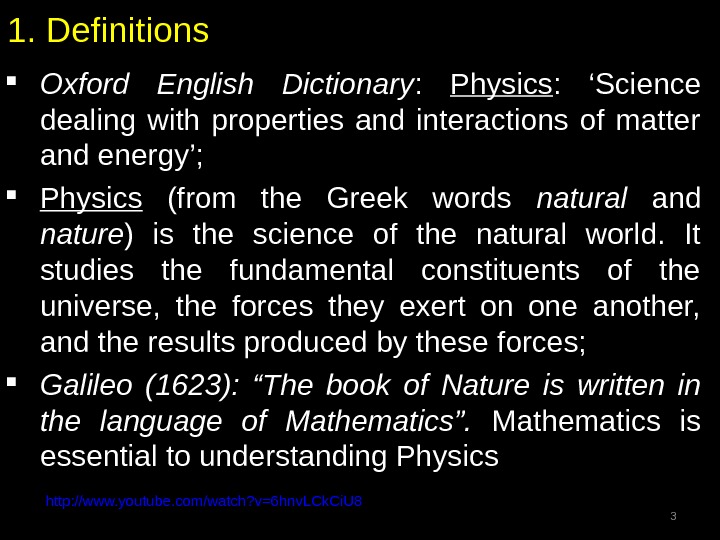
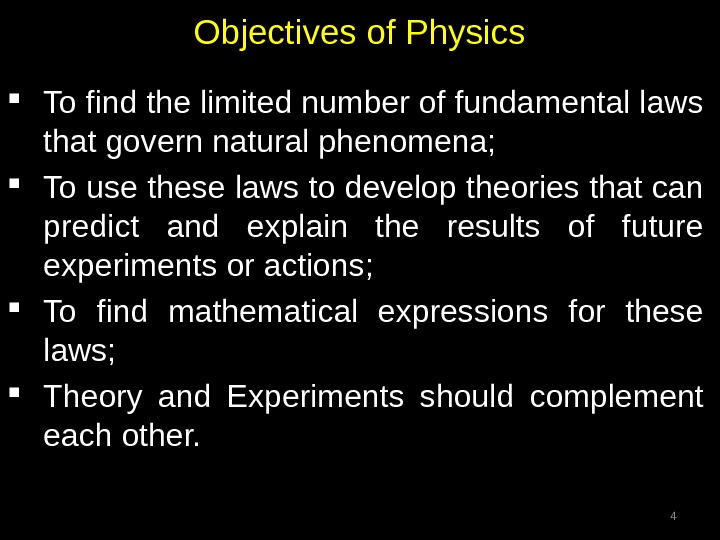
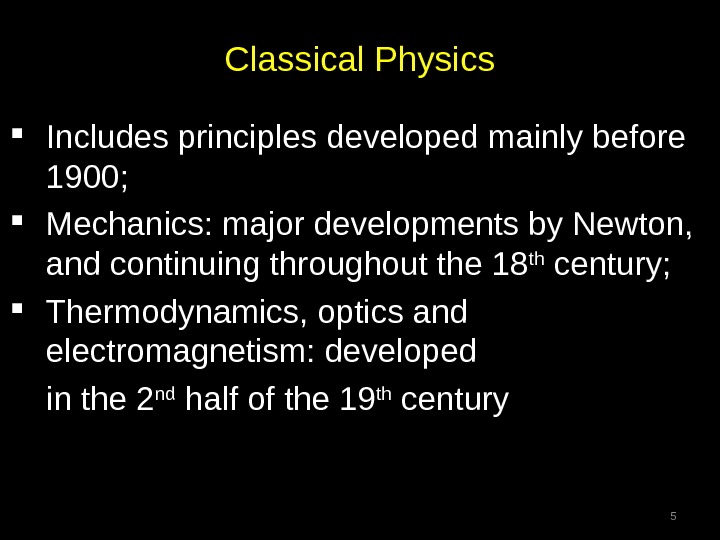


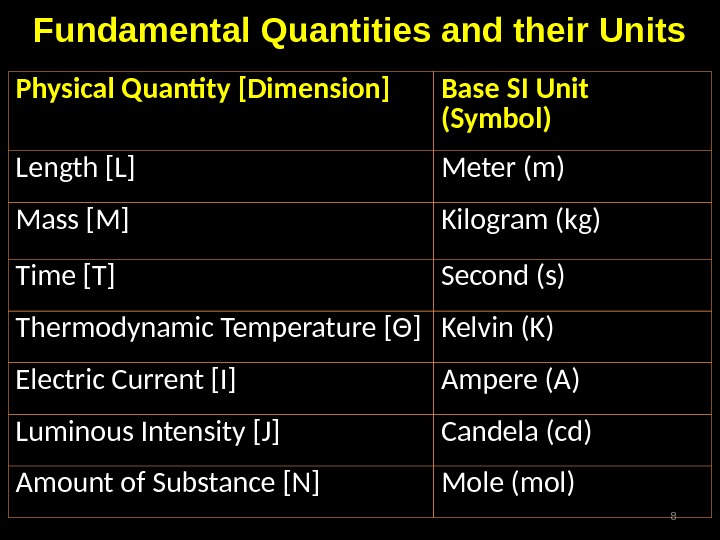
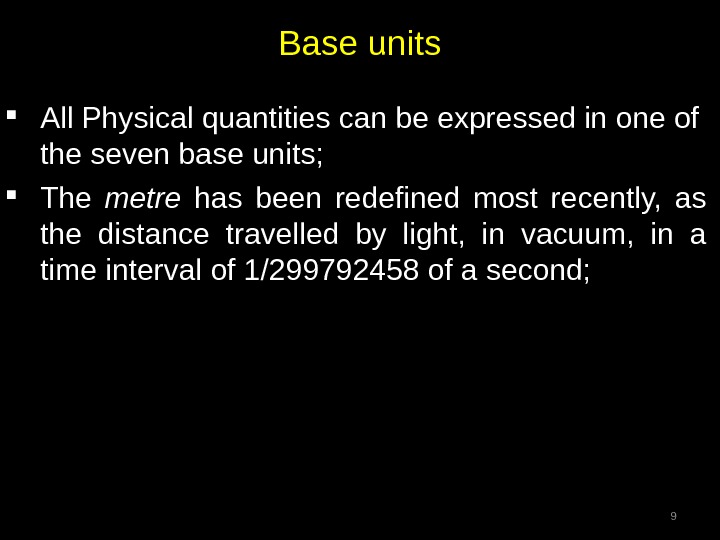
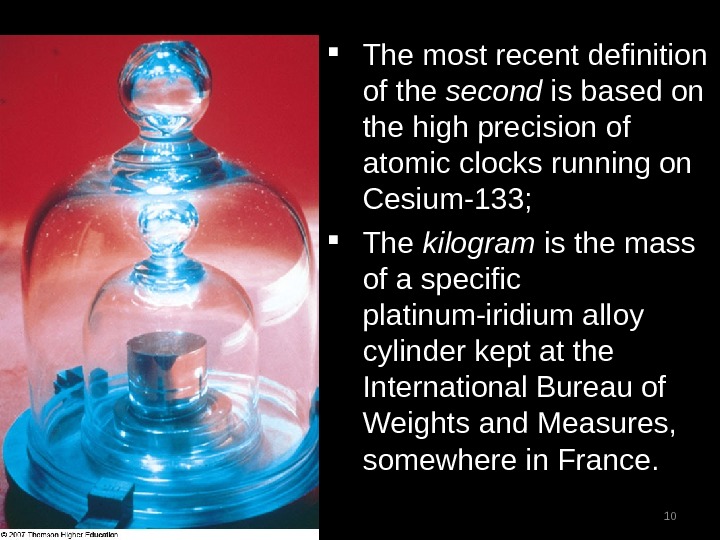
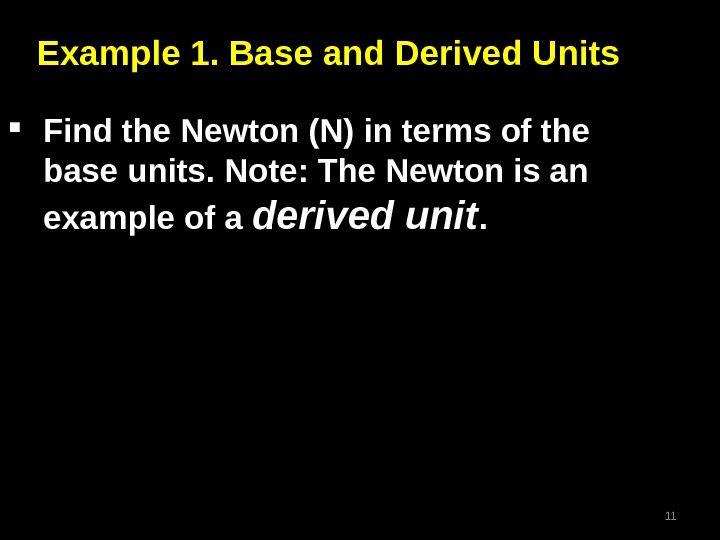
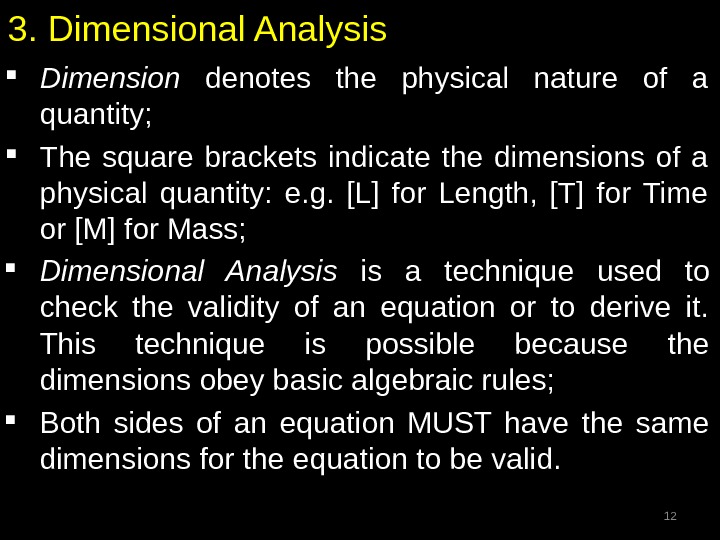
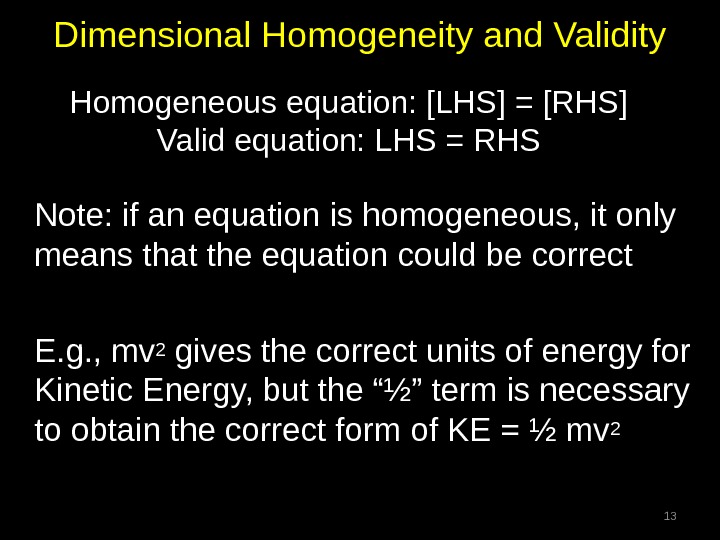
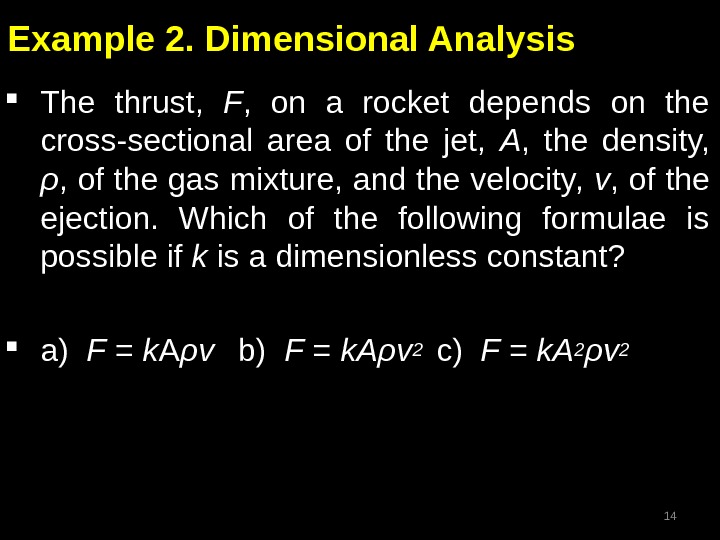
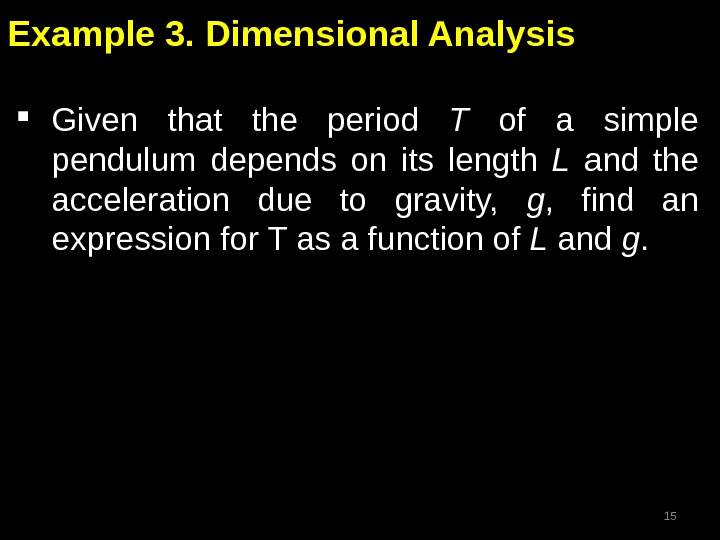
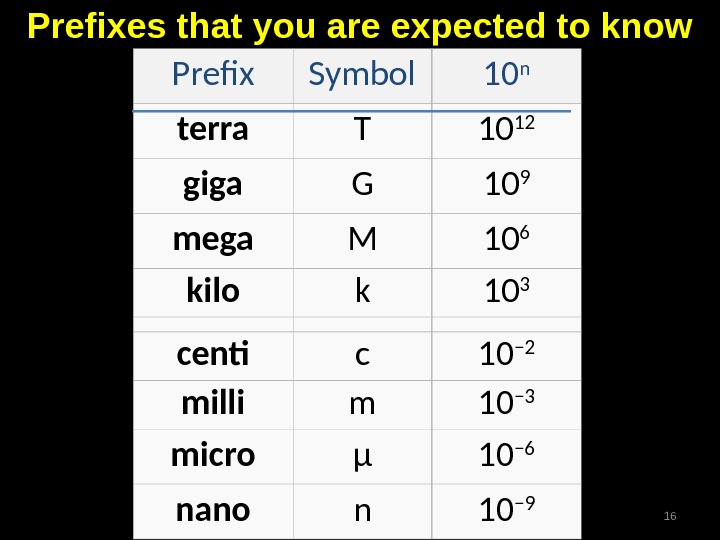
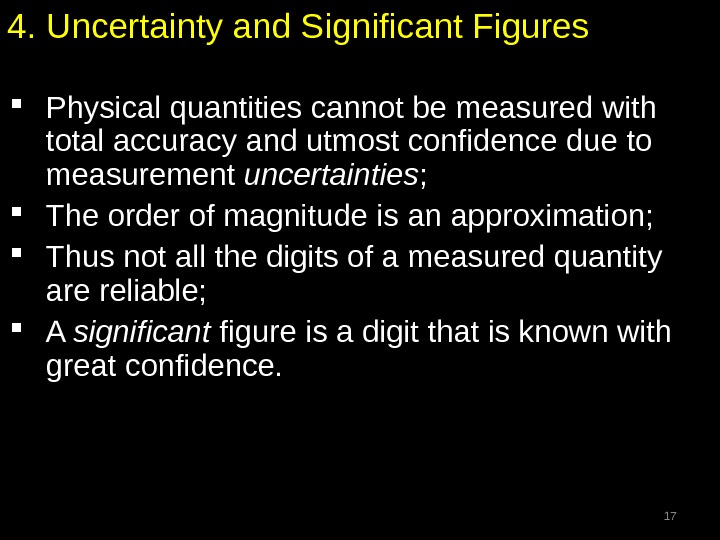
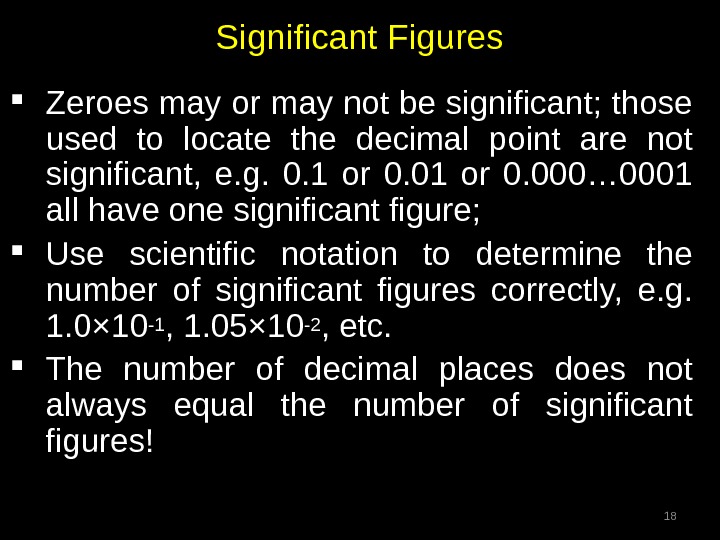
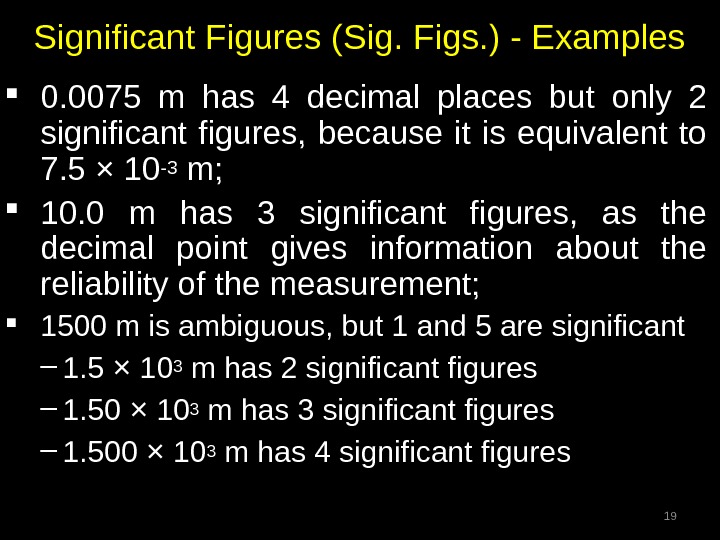
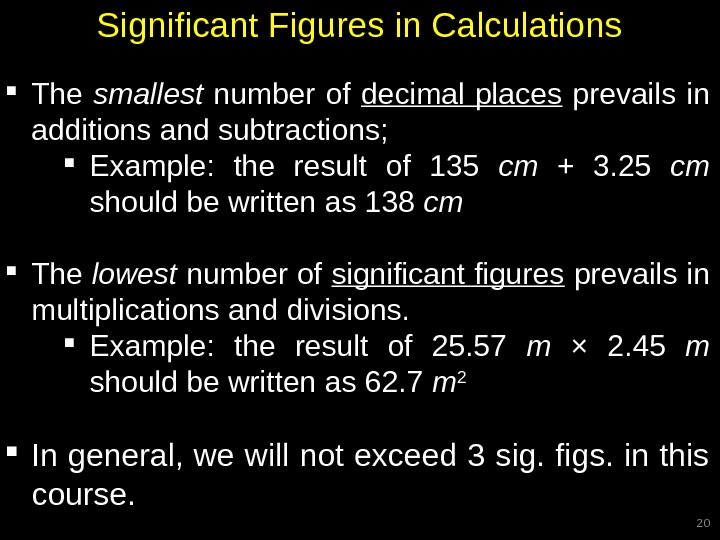
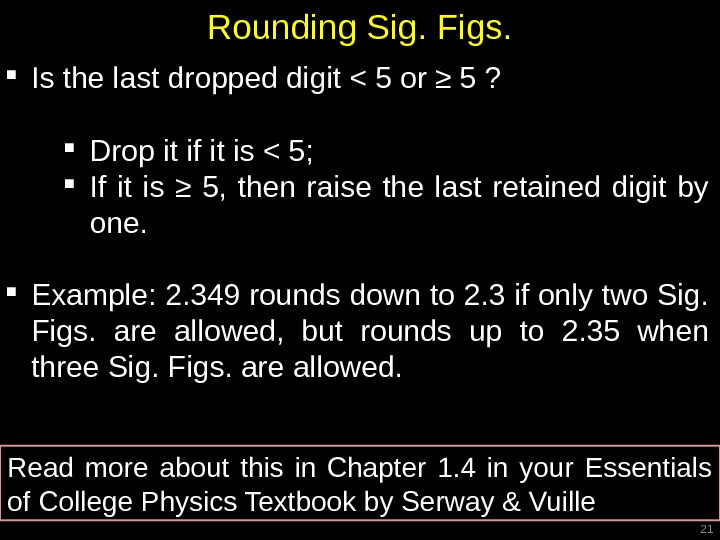
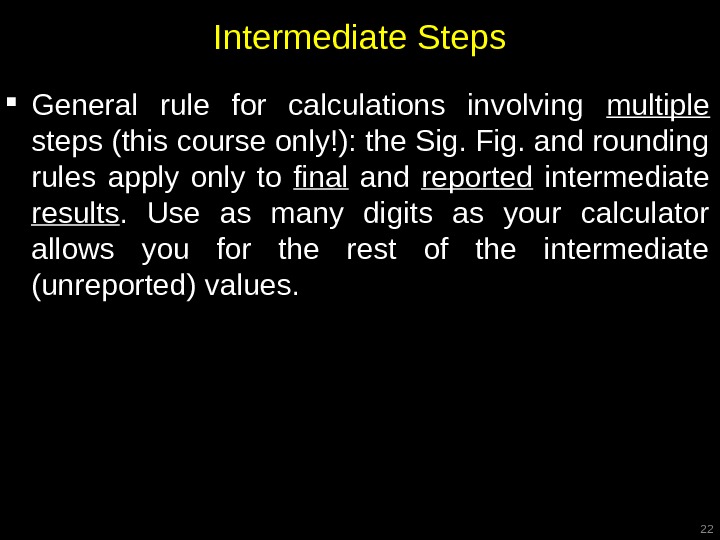
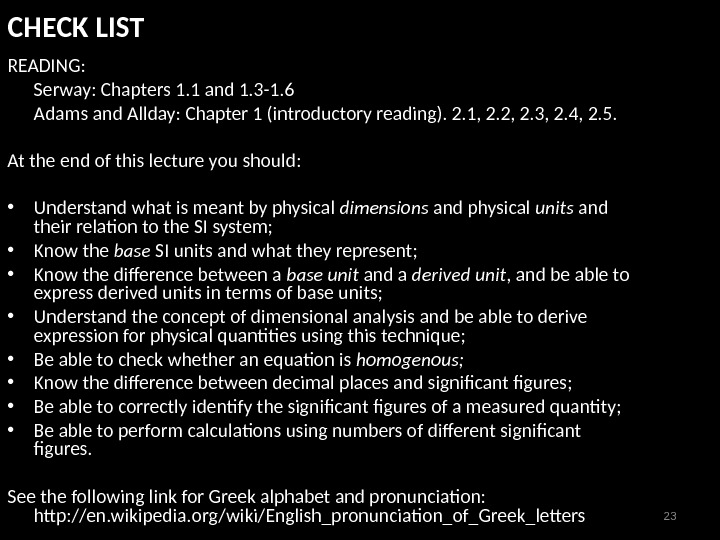
- Размер: 510.5 Кб
- Количество слайдов: 23
Описание презентации L 01. Dimensions and Units NU-CPS Physics по слайдам
 L 01. Dimensions and Units NU-CPS Physics 2014 Lecture outline 1. What is Physics? 2. Measurements and Units 3. Dimensional Analysis 4. Uncertainty and Significant Figures
L 01. Dimensions and Units NU-CPS Physics 2014 Lecture outline 1. What is Physics? 2. Measurements and Units 3. Dimensional Analysis 4. Uncertainty and Significant Figures
 Announcement Required Project Meeting for all Physics students: Wednesday, 1 st October , 2014 @ 4 pm Senate Hall Block 1, 3 rd floor Bring a notebook. Be on time.
Announcement Required Project Meeting for all Physics students: Wednesday, 1 st October , 2014 @ 4 pm Senate Hall Block 1, 3 rd floor Bring a notebook. Be on time.
 1. Definitions Oxford English Dictionary : Physics : ‘Science dealing with properties and interactions of matter and energy’; Physics (from the Greek words natural and nature ) is the science of the natural world. It studies the fundamental constituents of the universe, the forces they exert on one another, and the results produced by these forces; Galileo (1623): “The book of Nature is written in the language of Mathematics”. Mathematics is essential to understanding Physics http: //www. youtube. com/watch? v=6 hnv. LCk. Ci. U
1. Definitions Oxford English Dictionary : Physics : ‘Science dealing with properties and interactions of matter and energy’; Physics (from the Greek words natural and nature ) is the science of the natural world. It studies the fundamental constituents of the universe, the forces they exert on one another, and the results produced by these forces; Galileo (1623): “The book of Nature is written in the language of Mathematics”. Mathematics is essential to understanding Physics http: //www. youtube. com/watch? v=6 hnv. LCk. Ci. U
 Objectives of Physics To find the limited number of fundamental laws that govern natural phenomena; To use these laws to develop theories that can predict and explain the results of future experiments or actions; To find mathematical expressions for these laws; Theory and Experiments should complement each other.
Objectives of Physics To find the limited number of fundamental laws that govern natural phenomena; To use these laws to develop theories that can predict and explain the results of future experiments or actions; To find mathematical expressions for these laws; Theory and Experiments should complement each other.
 Classical Physics Includes principles developed mainly before 1900; Mechanics: major developments by Newton, and continuing throughout the 18 th century; Thermodynamics, optics and electromagnetism: developed in the 2 nd half of the 19 th century
Classical Physics Includes principles developed mainly before 1900; Mechanics: major developments by Newton, and continuing throughout the 18 th century; Thermodynamics, optics and electromagnetism: developed in the 2 nd half of the 19 th century
 Modern Physics Deals with phenomena that could not be explained by Classical Physics; Special Relativity: explains the behaviour of objects near the speed of light. Modifies the traditional concepts of space, time, mass, and energy; Quantum Physics: describes physical phenomena at the atomic level
Modern Physics Deals with phenomena that could not be explained by Classical Physics; Special Relativity: explains the behaviour of objects near the speed of light. Modifies the traditional concepts of space, time, mass, and energy; Quantum Physics: describes physical phenomena at the atomic level
 2. Measurements and Units Physics is quantitative: define variables, symbols or physical quantities, and their units ; Find relations between variables; Measure these variables; Our measurements must yield the same results when performed by anyone, anywhere and cannot change with time; we need a standard system of units! Système International (SI): agreed in 1960 by an International Committee, is currently used by almost all the countries in the world.
2. Measurements and Units Physics is quantitative: define variables, symbols or physical quantities, and their units ; Find relations between variables; Measure these variables; Our measurements must yield the same results when performed by anyone, anywhere and cannot change with time; we need a standard system of units! Système International (SI): agreed in 1960 by an International Committee, is currently used by almost all the countries in the world.
![Fundamental Quantities and their Units Physical Quantity [Dimension] Base SI Unit (Symbol) Length [L] Meter (m) Fundamental Quantities and their Units Physical Quantity [Dimension] Base SI Unit (Symbol) Length [L] Meter (m)](/docs//l01_dimensions_and_units_images/l01_dimensions_and_units_7.jpg) Fundamental Quantities and their Units Physical Quantity [Dimension] Base SI Unit (Symbol) Length [L] Meter (m) Mass [M] Kilogram (kg) Time [T] Second (s) Thermodynamic Temperature [ Θ ] Kelvin (K) Electric Current [I] Ampere (A) Luminous Intensity [J] Candela (cd) Amount of Substance [N] Mole (mol)
Fundamental Quantities and their Units Physical Quantity [Dimension] Base SI Unit (Symbol) Length [L] Meter (m) Mass [M] Kilogram (kg) Time [T] Second (s) Thermodynamic Temperature [ Θ ] Kelvin (K) Electric Current [I] Ampere (A) Luminous Intensity [J] Candela (cd) Amount of Substance [N] Mole (mol)
 Base units All Physical quantities can be expressed in one of the seven base units; The metre has been redefined most recently, as the distance travelled by light, in vacuum, in a time interval of 1/299792458 of a second;
Base units All Physical quantities can be expressed in one of the seven base units; The metre has been redefined most recently, as the distance travelled by light, in vacuum, in a time interval of 1/299792458 of a second;
 10 The most recent definition of the second is based on the high precision of atomic clocks running on Cesium-133; The kilogram is the mass of a specific platinum-iridium alloy cylinder kept at the International Bureau of Weights and Measures, somewhere in France.
10 The most recent definition of the second is based on the high precision of atomic clocks running on Cesium-133; The kilogram is the mass of a specific platinum-iridium alloy cylinder kept at the International Bureau of Weights and Measures, somewhere in France.
 Example 1. Base and Derived Units Find the Newton (N) in terms of the base units. Note: The Newton is an example of a derived unit.
Example 1. Base and Derived Units Find the Newton (N) in terms of the base units. Note: The Newton is an example of a derived unit.
 3. Dimensional Analysis Dimension denotes the physical nature of a quantity; The square brackets indicate the dimensions of a physical quantity: e. g. [L] for Length, [T] for Time or [M] for Mass; Dimensional Analysis is a technique used to check the validity of an equation or to derive it. This technique is possible because the dimensions obey basic algebraic rules; Both sides of an equation MUST have the same dimensions for the equation to be valid.
3. Dimensional Analysis Dimension denotes the physical nature of a quantity; The square brackets indicate the dimensions of a physical quantity: e. g. [L] for Length, [T] for Time or [M] for Mass; Dimensional Analysis is a technique used to check the validity of an equation or to derive it. This technique is possible because the dimensions obey basic algebraic rules; Both sides of an equation MUST have the same dimensions for the equation to be valid.
 Dimensional Homogeneity and Validity Note: if an equation is homogeneous, it only means that the equation could be correct E. g. , mv 2 gives the correct units of energy for Kinetic Energy, but the “½” term is necessary to obtain the correct form of KE = ½ mv 2 Homogeneous equation: [LHS] = [RHS] Valid equation: LHS = RHS
Dimensional Homogeneity and Validity Note: if an equation is homogeneous, it only means that the equation could be correct E. g. , mv 2 gives the correct units of energy for Kinetic Energy, but the “½” term is necessary to obtain the correct form of KE = ½ mv 2 Homogeneous equation: [LHS] = [RHS] Valid equation: LHS = RHS
 Example 2. Dimensional Analysis The thrust, F , on a rocket depends on the cross-sectional area of the jet, A , the density, ρ , of the gas mixture, and the velocity, v , of the ejection. Which of the following formulae is possible if k is a dimensionless constant? a) F = k A ρv b) F = k. Aρv 2 c) F = k. A 2 ρv
Example 2. Dimensional Analysis The thrust, F , on a rocket depends on the cross-sectional area of the jet, A , the density, ρ , of the gas mixture, and the velocity, v , of the ejection. Which of the following formulae is possible if k is a dimensionless constant? a) F = k A ρv b) F = k. Aρv 2 c) F = k. A 2 ρv
 Example 3. Dimensional Analysis Given that the period T of a simple pendulum depends on its length L and the acceleration due to gravity, g , find an expression for T as a function of L and g.
Example 3. Dimensional Analysis Given that the period T of a simple pendulum depends on its length L and the acceleration due to gravity, g , find an expression for T as a function of L and g.
 Prefix Symbol 10 n terra T 10 12 giga G 10 9 mega M 10 6 kilo k 10 3 centi c 10 − 2 milli m 10 − 3 micro μ 10 − 6 nano n 10 − 9 Prefixes that you are expected to know
Prefix Symbol 10 n terra T 10 12 giga G 10 9 mega M 10 6 kilo k 10 3 centi c 10 − 2 milli m 10 − 3 micro μ 10 − 6 nano n 10 − 9 Prefixes that you are expected to know
 4. Uncertainty and Significant Figures Physical quantities cannot be measured with total accuracy and utmost confidence due to measurement uncertainties ; The order of magnitude is an approximation; Thus not all the digits of a measured quantity are reliable; A significant figure is a digit that is known with great confidence.
4. Uncertainty and Significant Figures Physical quantities cannot be measured with total accuracy and utmost confidence due to measurement uncertainties ; The order of magnitude is an approximation; Thus not all the digits of a measured quantity are reliable; A significant figure is a digit that is known with great confidence.
 Significant Figures Zeroes may or may not be significant; those used to locate the decimal point are not significant, e. g. 0. 1 or 0. 000… 0001 all have one significant figure; Use scientific notation to determine the number of significant figures correctly, e. g. 1. 0× 10 -1 , 1. 05× 10 -2 , etc. The number of decimal places does not always equal the number of significant figures!
Significant Figures Zeroes may or may not be significant; those used to locate the decimal point are not significant, e. g. 0. 1 or 0. 000… 0001 all have one significant figure; Use scientific notation to determine the number of significant figures correctly, e. g. 1. 0× 10 -1 , 1. 05× 10 -2 , etc. The number of decimal places does not always equal the number of significant figures!
 Significant Figures (Sig. Figs. ) — Examples 0. 0075 m has 4 decimal places but only 2 significant figures, because it is equivalent to 7. 5 × 10 -3 m; 10. 0 m has 3 significant figures, as the decimal point gives information about the reliability of the measurement; 1500 m is ambiguous, but 1 and 5 are significant – 1. 5 × 10 3 m has 2 significant figures – 1. 50 × 10 3 m has 3 significant figures – 1. 500 × 10 3 m has 4 significant figures
Significant Figures (Sig. Figs. ) — Examples 0. 0075 m has 4 decimal places but only 2 significant figures, because it is equivalent to 7. 5 × 10 -3 m; 10. 0 m has 3 significant figures, as the decimal point gives information about the reliability of the measurement; 1500 m is ambiguous, but 1 and 5 are significant – 1. 5 × 10 3 m has 2 significant figures – 1. 50 × 10 3 m has 3 significant figures – 1. 500 × 10 3 m has 4 significant figures
 Significant Figures in Calculations The smallest number of decimal places prevails in additions and subtractions; Example: the result of 135 cm + 3. 25 cm should be written as 138 cm The lowest number of significant figures prevails in multiplications and divisions. Example: the result of 25. 57 m × 2. 45 m should be written as 62. 7 m 2 In general, we will not exceed 3 sig. figs. in this course.
Significant Figures in Calculations The smallest number of decimal places prevails in additions and subtractions; Example: the result of 135 cm + 3. 25 cm should be written as 138 cm The lowest number of significant figures prevails in multiplications and divisions. Example: the result of 25. 57 m × 2. 45 m should be written as 62. 7 m 2 In general, we will not exceed 3 sig. figs. in this course.
 Rounding Sig. Figs. Is the last dropped digit < 5 or ≥ 5 ? Drop it if it is < 5; If it is ≥ 5, then raise the last retained digit by one. Example: 2. 349 rounds down to 2. 3 if only two Sig. Figs. are allowed, but rounds up to 2. 35 when three Sig. Figs. are allowed. Read more about this in Chapter 1. 4 in your Essentials of College Physics Textbook by Serway & Vuille
Rounding Sig. Figs. Is the last dropped digit < 5 or ≥ 5 ? Drop it if it is < 5; If it is ≥ 5, then raise the last retained digit by one. Example: 2. 349 rounds down to 2. 3 if only two Sig. Figs. are allowed, but rounds up to 2. 35 when three Sig. Figs. are allowed. Read more about this in Chapter 1. 4 in your Essentials of College Physics Textbook by Serway & Vuille
 Intermediate Steps General rule for calculations involving multiple steps (this course only!): the Sig. Fig. and rounding rules apply only to final and reported intermediate results. Use as many digits as your calculator allows you for the rest of the intermediate (unreported) values.
Intermediate Steps General rule for calculations involving multiple steps (this course only!): the Sig. Fig. and rounding rules apply only to final and reported intermediate results. Use as many digits as your calculator allows you for the rest of the intermediate (unreported) values.
 CHECK LIST READING: Serway: Chapters 1. 1 and 1. 3 -1. 6 Adams and Allday: Chapter 1 (introductory reading). 2. 1, 2. 2, 2. 3, 2. 4, 2. 5. At the end of this lecture you should: • Understand what is meant by physical dimensions and physical units and their relation to the SI system; • Know the base SI units and what they represent; • Know the difference between a base unit and a derived unit , and be able to express derived units in terms of base units; • Understand the concept of dimensional analysis and be able to derive expression for physical quantities using this technique; • Be able to check whether an equation is homogenous; • Know the difference between decimal places and significant figures; • Be able to correctly identify the significant figures of a measured quantity; • Be able to perform calculations using numbers of different significant figures. See the following link for Greek alphabet and pronunciation: http: //en. wikipedia. org/wiki/English_pronunciation_of_Greek_letters
CHECK LIST READING: Serway: Chapters 1. 1 and 1. 3 -1. 6 Adams and Allday: Chapter 1 (introductory reading). 2. 1, 2. 2, 2. 3, 2. 4, 2. 5. At the end of this lecture you should: • Understand what is meant by physical dimensions and physical units and their relation to the SI system; • Know the base SI units and what they represent; • Know the difference between a base unit and a derived unit , and be able to express derived units in terms of base units; • Understand the concept of dimensional analysis and be able to derive expression for physical quantities using this technique; • Be able to check whether an equation is homogenous; • Know the difference between decimal places and significant figures; • Be able to correctly identify the significant figures of a measured quantity; • Be able to perform calculations using numbers of different significant figures. See the following link for Greek alphabet and pronunciation: http: //en. wikipedia. org/wiki/English_pronunciation_of_Greek_letters

